MKT101A - Marketing Fundamentals: PepsiCo's Marketing Mix Strategies
VerifiedAdded on 2023/05/23
|25
|2039
|53
Presentation
AI Summary
This presentation provides a detailed analysis of PepsiCo's marketing mix strategies. It begins with background information on PepsiCo, highlighting its history and market dominance. The presentation then delves into the product mix strategy, covering beverages like Diet Pepsi, Tropicana, and Gatorade. It also examines target market analysis, including segmentation strategies based on demographics and psychographics, focusing on young consumers. The presentation further discusses PepsiCo's positioning strategy, emphasizing its energizing cola drink image and differentiation from competitors. Pricing and promotional strategies, including the Pepsi Stuff promotion and partnerships with celebrities, are also explored. Additionally, the presentation covers placement strategies, including global market expansion, and physical evidence, such as sustainable packaging initiatives. Finally, the presentation discusses the importance of people and processes within PepsiCo's marketing efforts. Desklib offers a range of similar marketing assignments and study resources for students.
1 out of 25
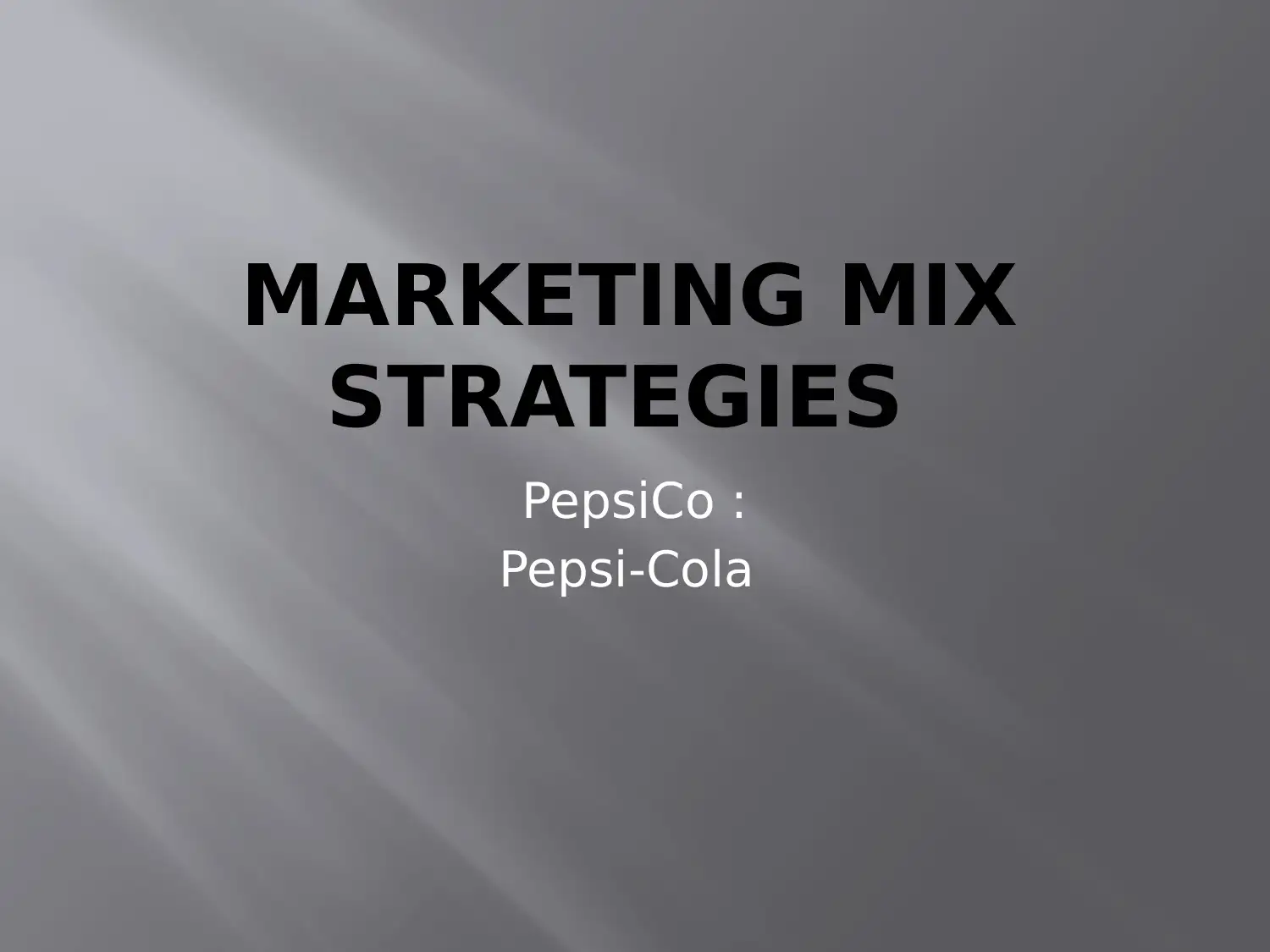
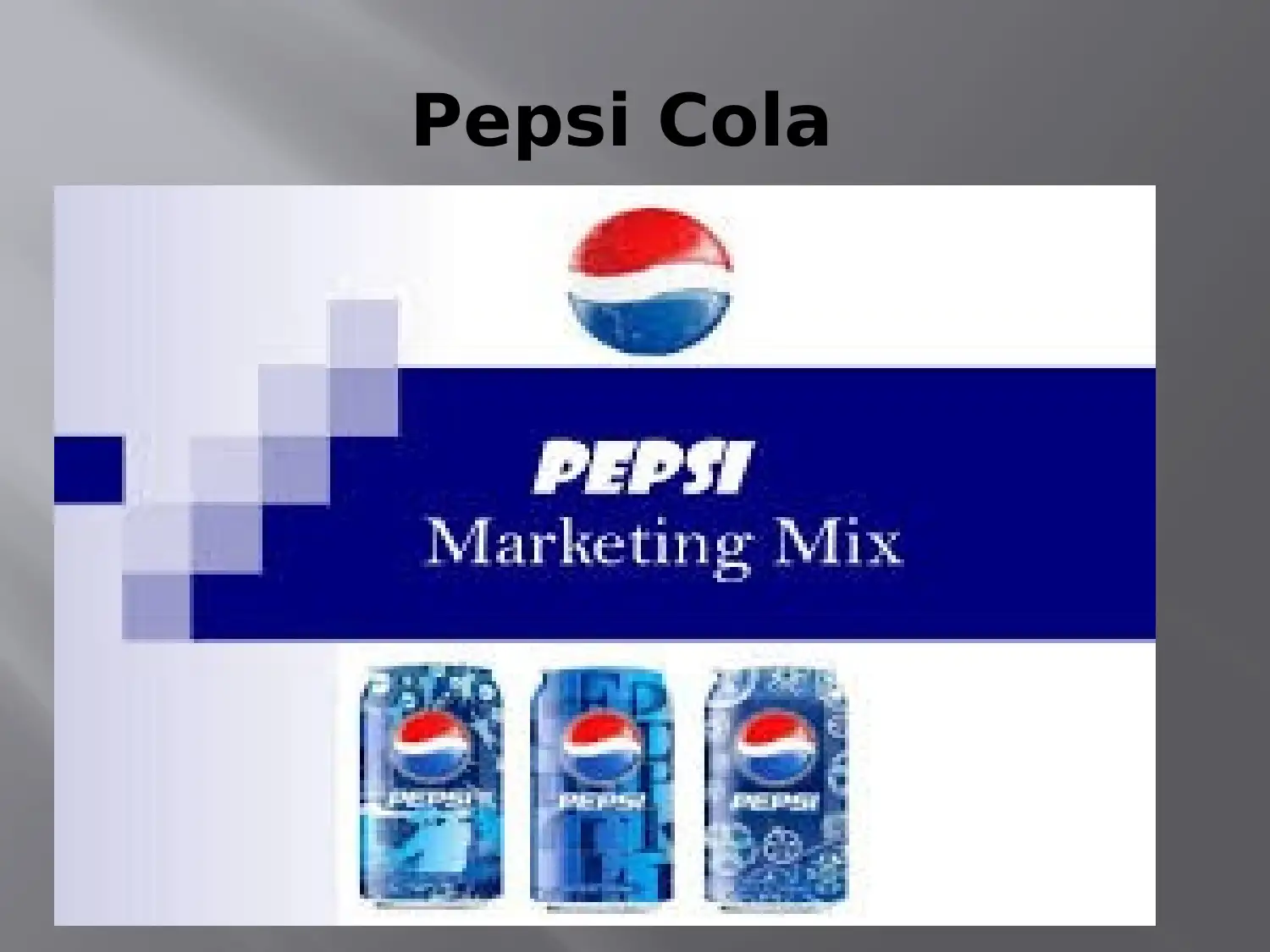
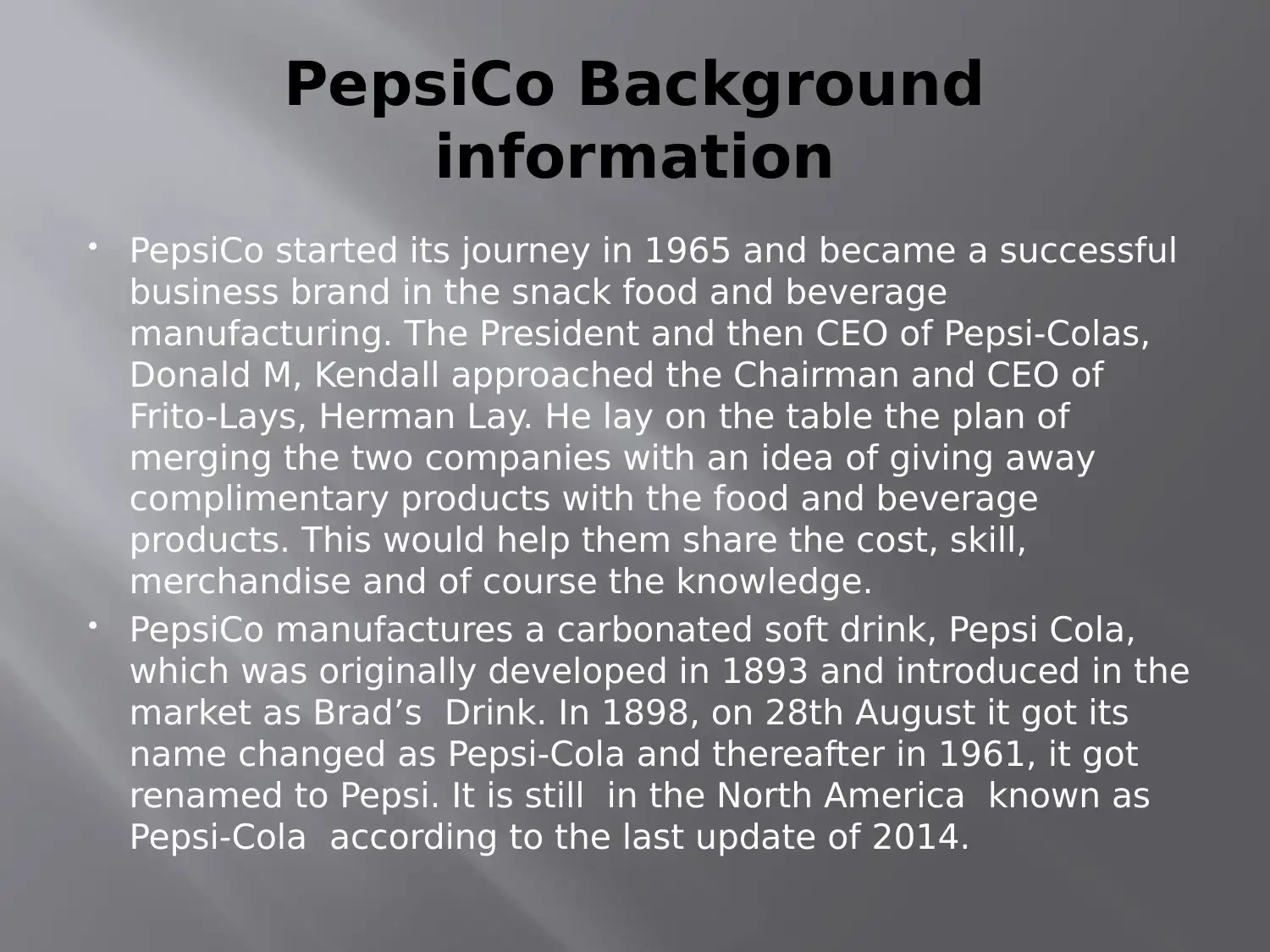

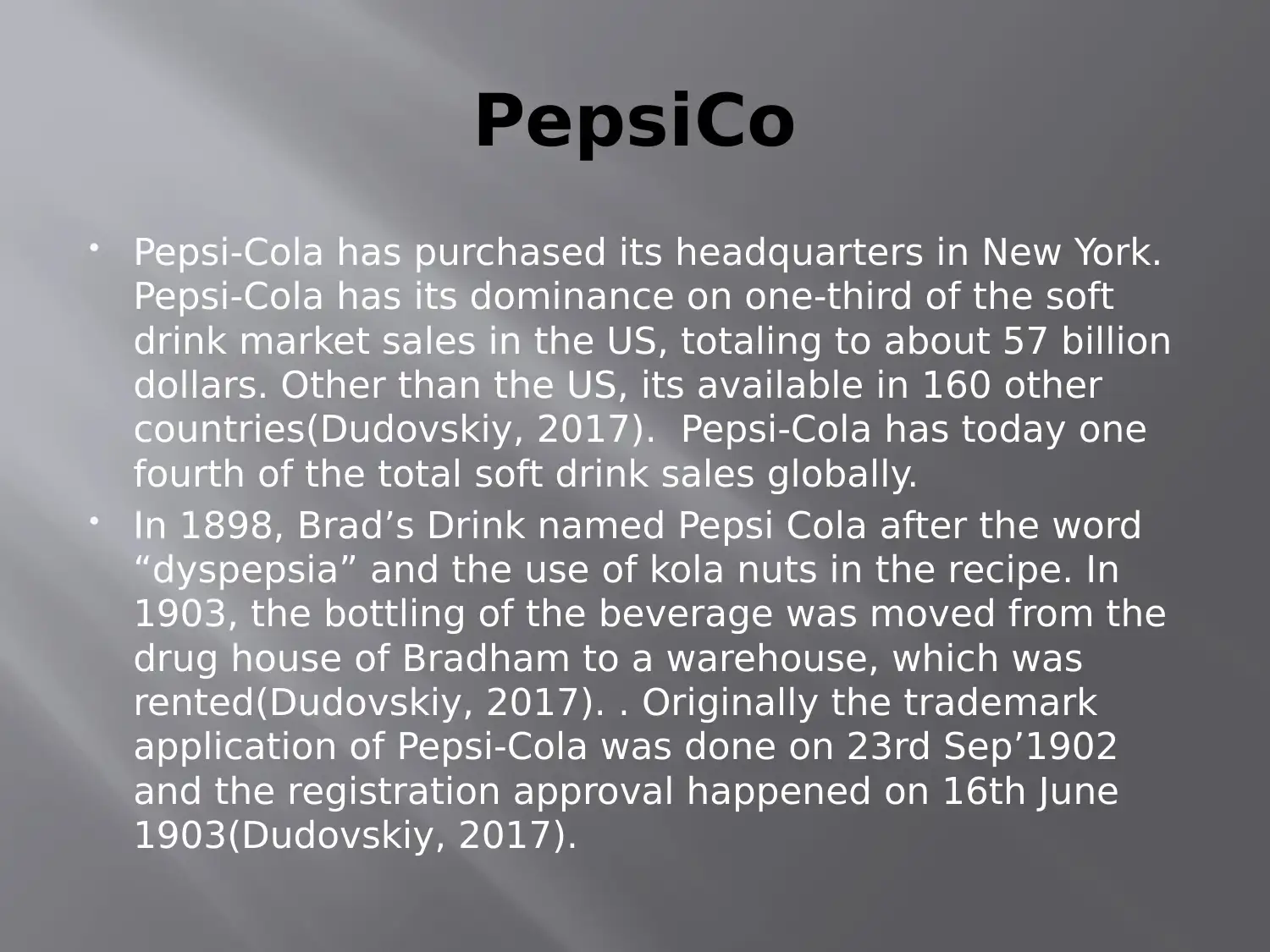
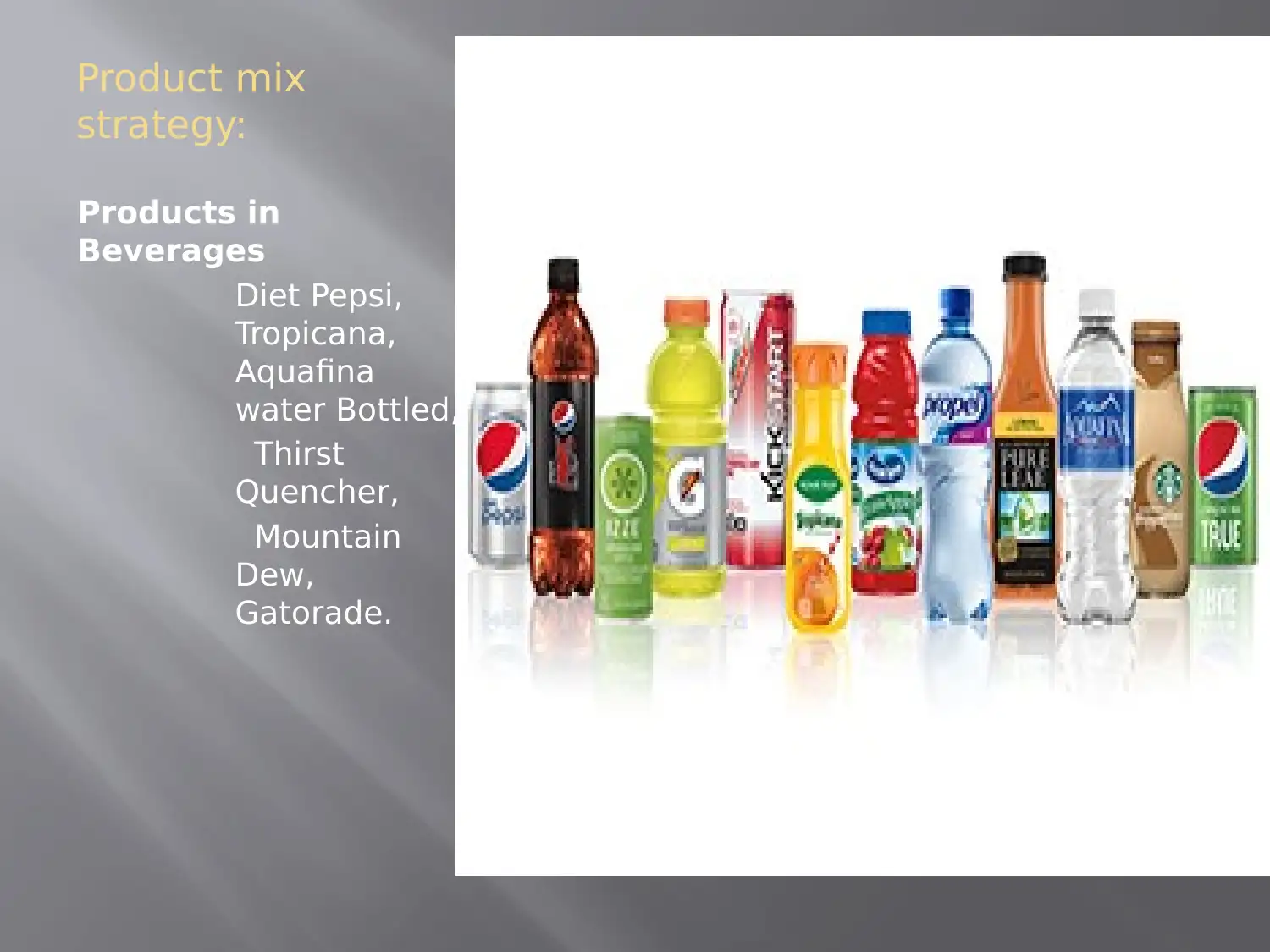
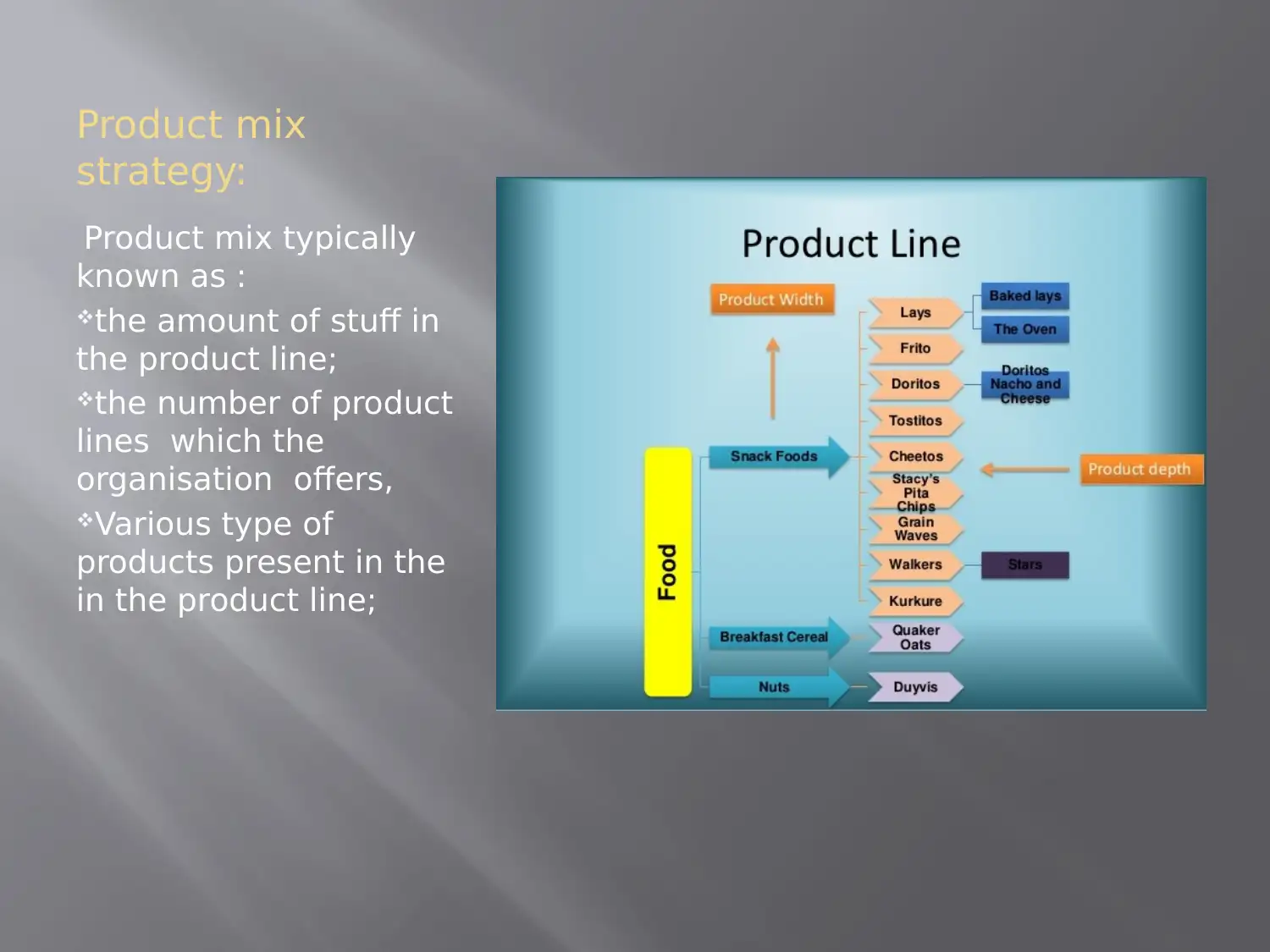
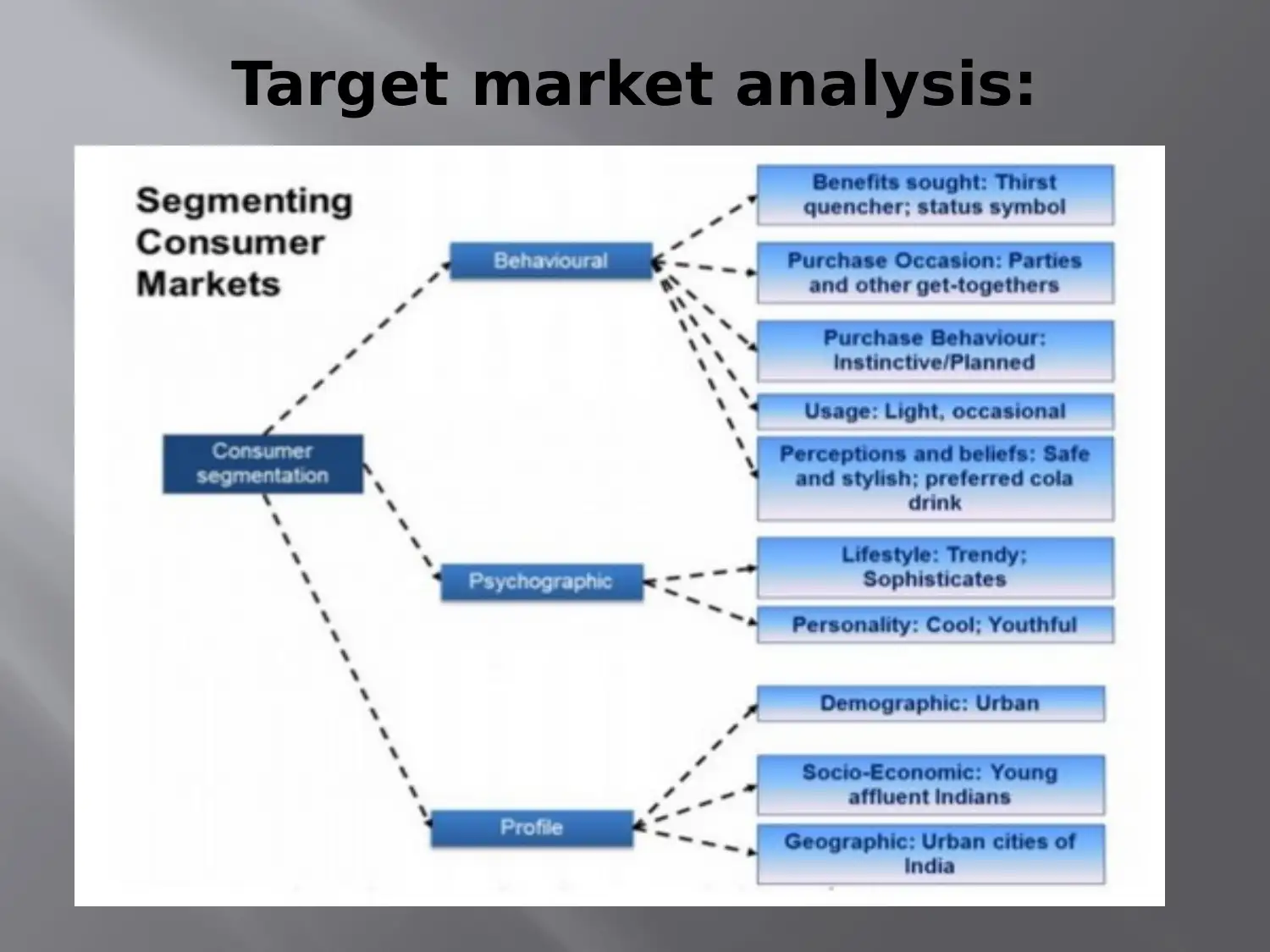
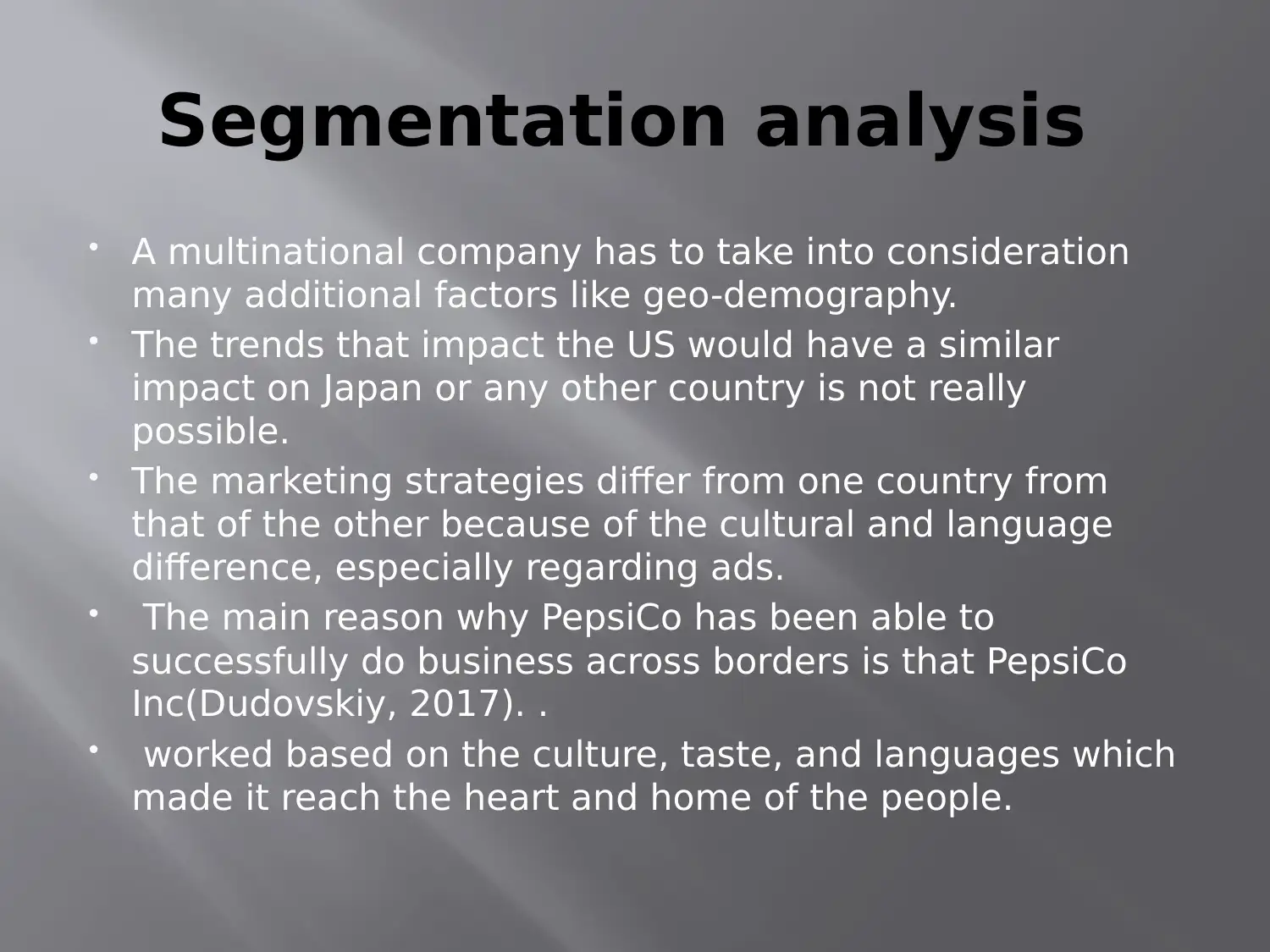
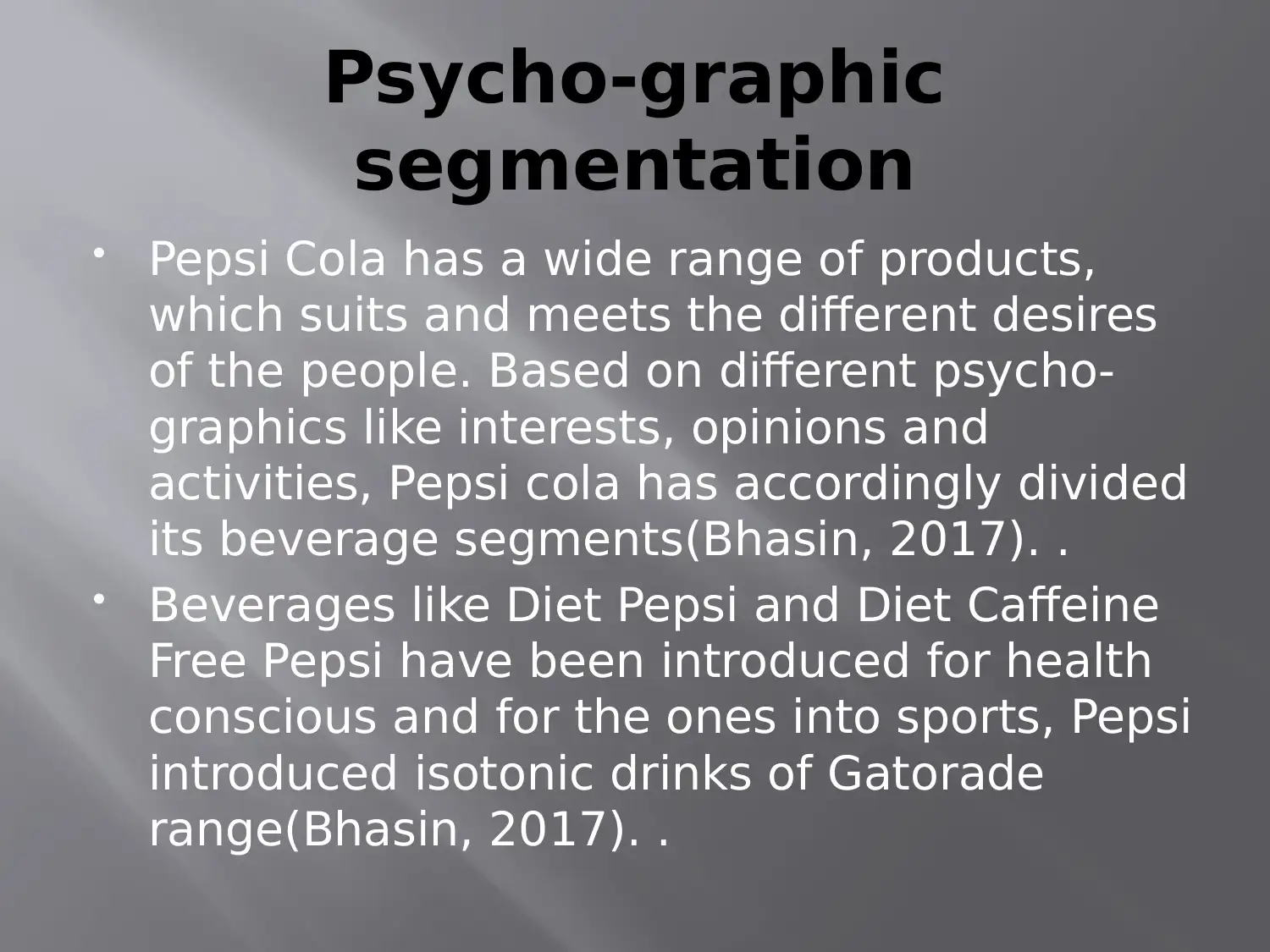
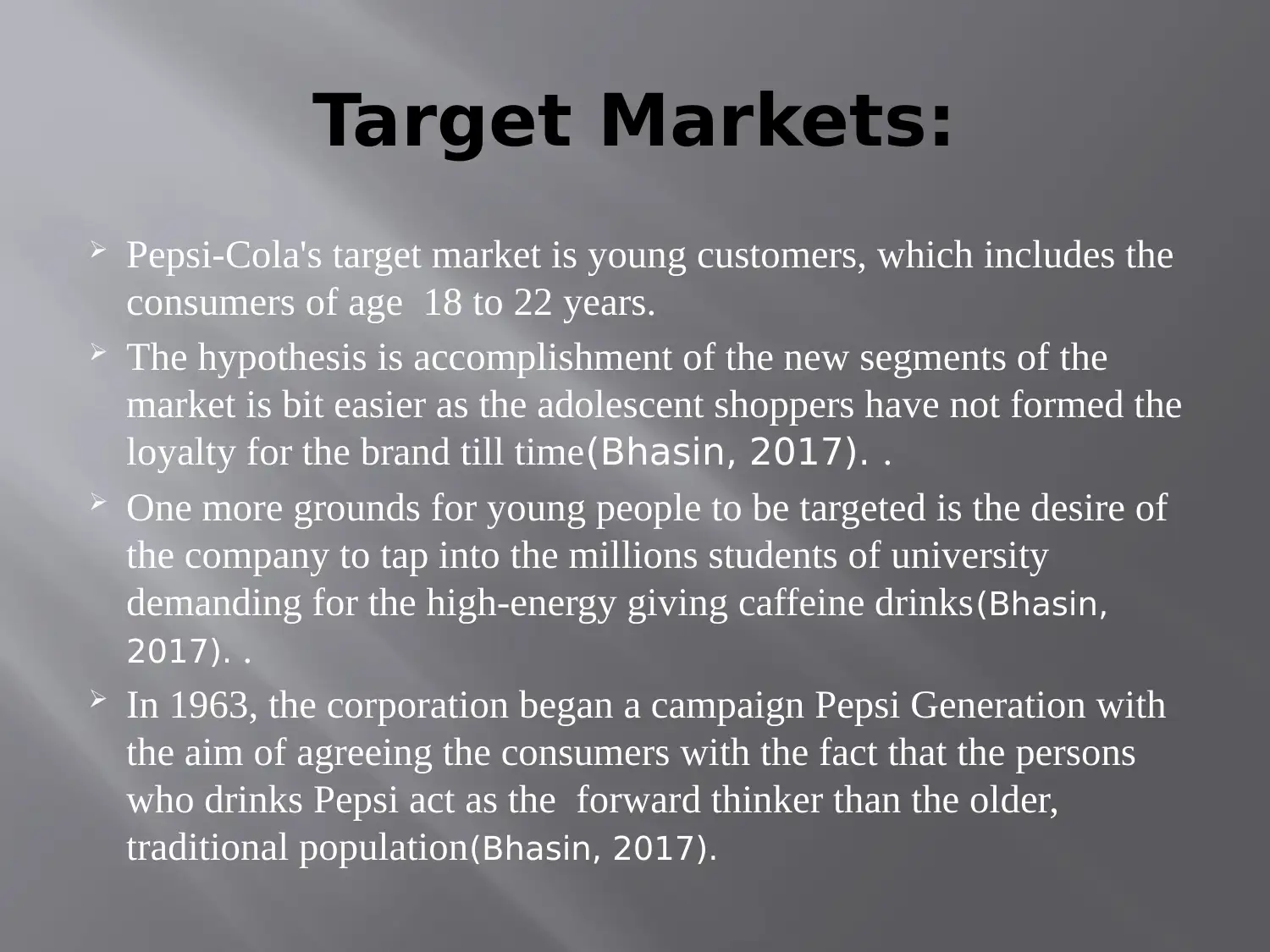
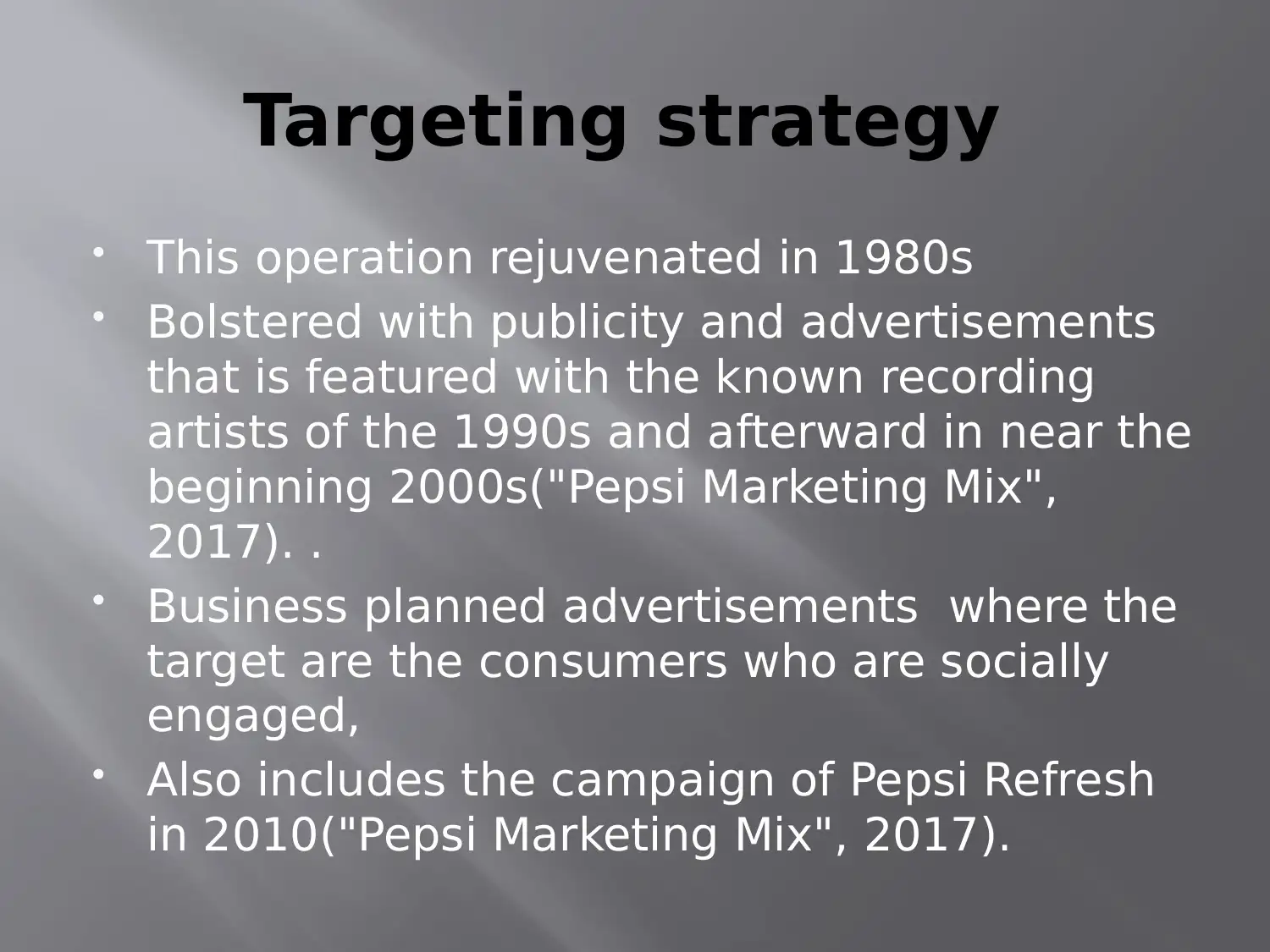
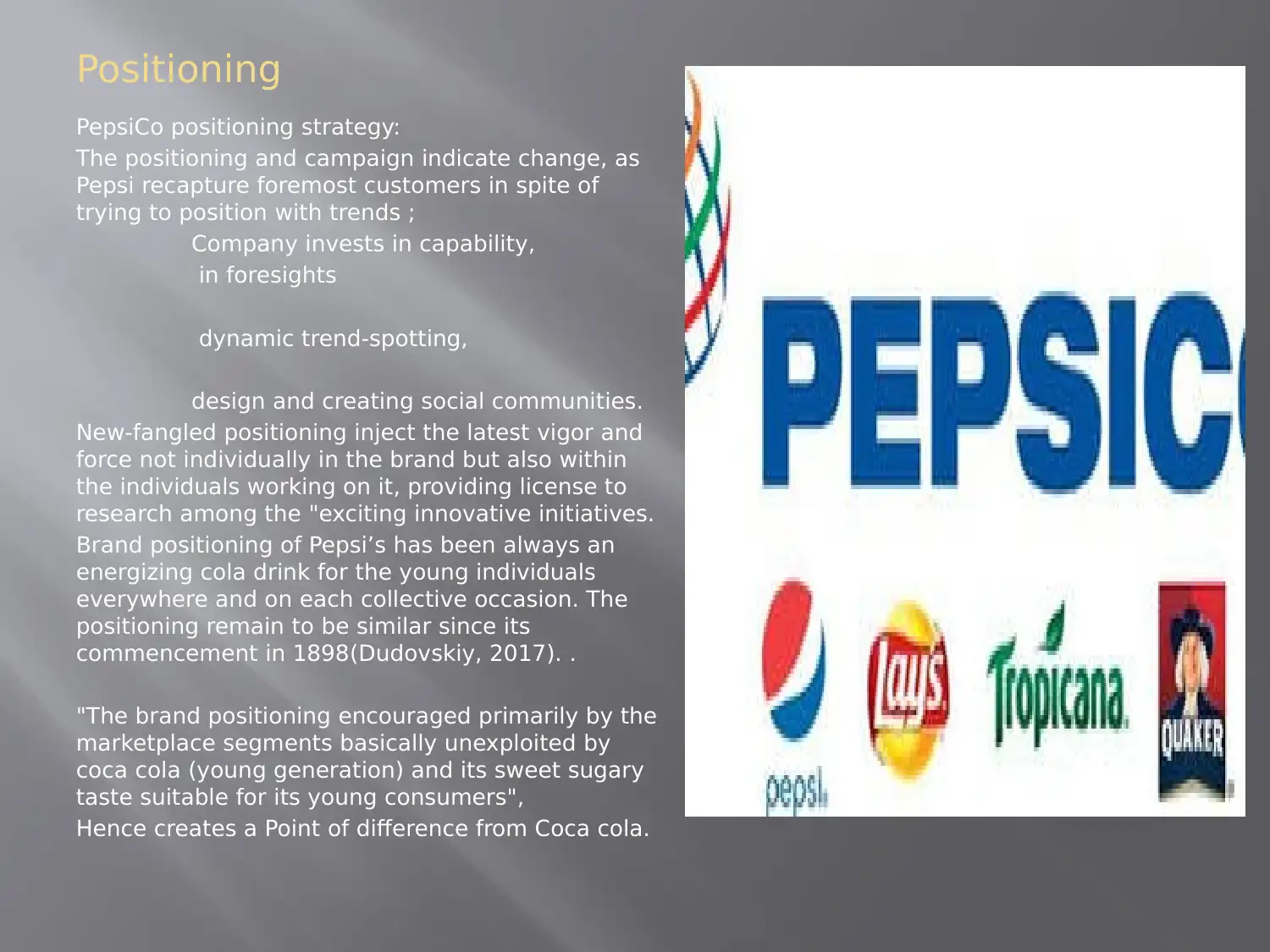






![[object Object]](/_next/static/media/star-bottom.7253800d.svg)